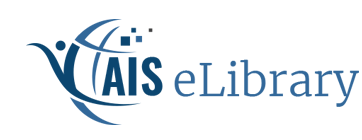IT Project Management (SIG ITProjMgmt)
Agile IS Development Control: An Analysis of Four Different Scenarios and Their Control Implications
Loading...
Paper Type
Complete
Paper Number
1238
Description
Finding the optimal distribution of control and flexibility is an ongoing struggle in Information Systems Development (ISD). While flexibility allows projects to adapt to changing requirements, control helps reaching the desired time, cost and quality objectives. Agile approaches place higher emphasis on flexibility that challenges control conceptualizations typical in traditional ISD. Scarce research on controlling agile ISD provided conflicting control configuration recommendations probably due to different contexts and agile development rarely following instructions in a systematic manner. By drawing on a qualitative case study, we describe four distinct roles managers in agile ISD take contingent on contextual factors, and explore resulting control configurations in terms of control modes and enactment styles. Our findings in particular imply that costs of control fluctuate depending on the chosen role and that agency as a theoretical lens may be too narrow to understand the full spectrum of control activities in agile ISD projects.
Recommended Citation
Virag, Peter; Bernroider, Edward; and Remus, Ulrich, "Agile IS Development Control: An Analysis of Four Different Scenarios and Their Control Implications" (2021). AMCIS 2021 Proceedings. 4.
https://aisel.aisnet.org/amcis2021/it_projmgmt/it_projmgmt/4
Agile IS Development Control: An Analysis of Four Different Scenarios and Their Control Implications
Finding the optimal distribution of control and flexibility is an ongoing struggle in Information Systems Development (ISD). While flexibility allows projects to adapt to changing requirements, control helps reaching the desired time, cost and quality objectives. Agile approaches place higher emphasis on flexibility that challenges control conceptualizations typical in traditional ISD. Scarce research on controlling agile ISD provided conflicting control configuration recommendations probably due to different contexts and agile development rarely following instructions in a systematic manner. By drawing on a qualitative case study, we describe four distinct roles managers in agile ISD take contingent on contextual factors, and explore resulting control configurations in terms of control modes and enactment styles. Our findings in particular imply that costs of control fluctuate depending on the chosen role and that agency as a theoretical lens may be too narrow to understand the full spectrum of control activities in agile ISD projects.
When commenting on articles, please be friendly, welcoming, respectful and abide by the AIS eLibrary Discussion Thread Code of Conduct posted here.


